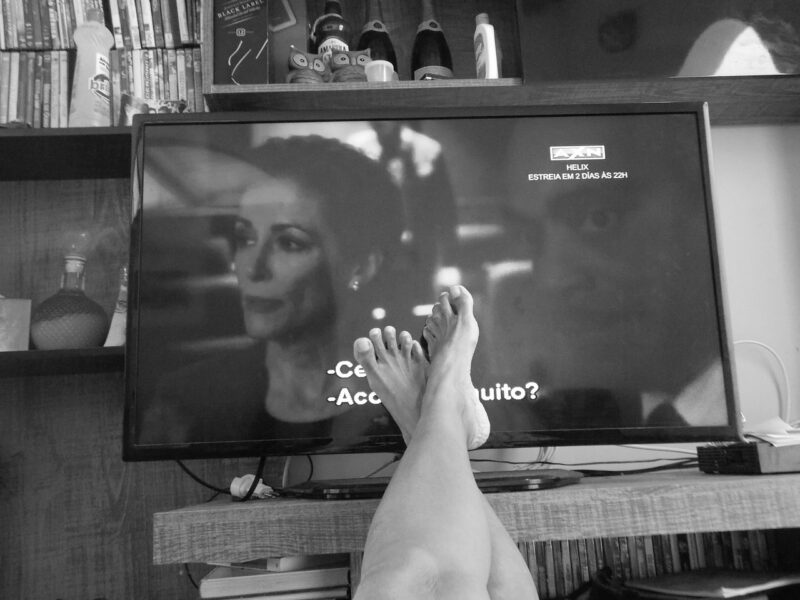Binge-Watching Through the Ages: How TV Shows Mirror Society
November 19, 2024

Binge-watching has become a ubiquitous part of modern entertainment, a cultural phenomenon that reflects our rapidly shifting society. With the rise of platforms like Netflix, Hulu, and Amazon Prime Video, audiences can now enjoy entire seasons of their favorite shows in one sitting, leading to the emergence of binge-watching as a social activity. But binge-watching is not just about entertainment; it is a lens through which we can examine our changing cultural values, social norms, and the evolution of storytelling in television.
1. The Evolution of Television and Binge-Watching
The roots of binge-watching can be traced back to traditional television, where viewers had to tune in at specific times to catch their favorite shows. This model was not only restrictive but also created a sense of urgency among viewers to not miss an episode. However, the advent of DVR technology and streaming services gradually shifted this paradigm, providing audiences with the freedom to consume content on their own terms.
Initially, major broadcasting networks released episodes weekly, creating a sense of anticipation and discussion among fans. Fast forward to today, and nearly everything has changed. Viewers can now devour complete seasons or series at once, leading to discussions about what it means to binge-watch and how it affects our engagement with content.
Binge-watching changes not just how we watch but also what we watch. Here’s a timeline that helps illustrate this evolution:
- 1970s-1980s: The era of episodic television, where a show could be enjoyed regardless of continuity. Sitcoms and procedural dramas became staples of viewership, with audiences eagerly awaiting weekly installments.
- 1990s: The birth of syndication allowed older shows to be consumed in bulk. The concept of viewing ‘box sets’ gained popularity as fans wanted to relive their favorite moments from shows like “Friends” and “Seinfeld”.
- 2000s: The introduction of DVD box sets made binge-watching accessible and popular. Simultaneously, the rise of internet television began paving the way for the next big shift.
- 2010s-Present: Streaming services revolutionized viewing habits entirely, allowing not only binge-watching but creating shows specifically designed to cater to this form of consumption, like “Stranger Things” and “The Crown”.
As audiences turned to streaming, their relationship with shows began to evolve immensely, leading to the rise of new genres and storytelling techniques.
2. Binge-Watching as a Reflection of Society
Binge-watching is not just about leisure; it reflects larger societal issues and cultural changes. Each era in television has mirrored the prevailing themes and struggles of its time. Here’s how:
1. **Social Issues**: When shows tackle prevalent social issues—such as gender identity, systemic racism, and mental health—the binge-watching format enables deeper dives into character development and complex narratives. Shows like “Orange is the New Black” and “The Handmaid’s Tale” provide not just entertainment but commentary on the social climate.
2. **Changing Family Dynamics**: Multi-generational households are seeing less representation as more individuals live alone or in single-person households, reflecting a societal shift. The family sitcoms of the past are giving way to narratives that explore the complexities of modern relationships, such as those in “This Is Us” or “Big Little Lies”.
3. **Immediate Gratification**: Today’s culture revels in immediate satisfaction, which is illustrated through binge-watching habits. The ability to consume entire seasons of shows without waiting reflects the pace of life and expectations set by technology—everything is at our fingertips within moments.
4. **Community and Isolation**: Streaming services have bred unique communities online, where viewers discuss, critique, and celebrate shows. However, paradoxically, the accessibility of binge-watching can occasionally fuel feelings of isolation as individuals choose a screen over personal interaction, highlighting societal shifts in communication.
These changes not only reflect current social themes but also act as catalysts for further discussion and exploration of these topics through media.
3. The Science Behind Binge-Watching
Research indicates that binge-watching can impact both mental health and social behavior. Understanding why we find ourselves glued to screens can shed light on our viewing habits:
– **Release of Dopamine**: Watching exciting or engaging episodes can lead to a release of dopamine in the brain, often referred to as the ‘feel-good’ chemical. This creates a rewarding cycle where viewers desire the next episode as much as possible, leading to extended viewing sessions.
– **Escape from Reality**: With the stresses of daily life, binge-watching can serve as a form of escapism, providing a buffer from real-world issues. For many, immersing themselves in fictional universes offers relief, at least temporarily.
– **Interpersonal Connections**: Watching a series with friends or discussing storylines online can create bonds, transforming solitary activity into shared experiences, thus highlighting the communal aspect of binge-watching.
While binge-watching can have its downsides, like reduced physical activity or procrastination, it often emerges as a method for maintaining relationships, albeit in a digital space.
4. The Future of Binge-Watching
Looking ahead, as technology continues to advance and the boundaries of storytelling expand, so too will binge-watching habits and the content designed for it. Trends to watch for include:
– **Interactive Television**: The rise of interactive shows that allow viewers to impact storylines will put the control back in the hands of consumers. Programs like “Black Mirror: Bandersnatch” exemplify this trend, as audiences become more than passive viewers.
– **Global Content Consumption**: As streaming platforms expand globally, we may see more diverse stories that reflect different cultures, mirroring a more interconnected world. Shows originating from countries like Korea and India are gaining mainstream appeal, reflecting a broader array of perspectives and experiences.
– **Niche Programming**: As audiences become increasingly specialized in their viewing habits, the rise of targeted content will lead to more niche programs, appealing to smaller but highly dedicated fan bases.
Binge-watching stands poised to alter our cultural landscape further, challenging the industry to continuously adapt and change with its audience.
Conclusion
From its humble beginnings to a cornerstone of modern entertainment, binge-watching remains a testament to humanity’s evolving relationship with media. As we progress through the digital age, shows will continue to reflect our societies, beliefs, and challenges. By understanding the patterns of binge-watching, we gain insight not only into the art of storytelling but also into ourselves—who we are, what we value, and how we connect.
Thus, the next time you find yourself sinking into your couch for a few hours of uninterrupted viewing, remember that you are part of a larger narrative—a narrative woven through years of television history that reflects, challenges, and shapes our society.







